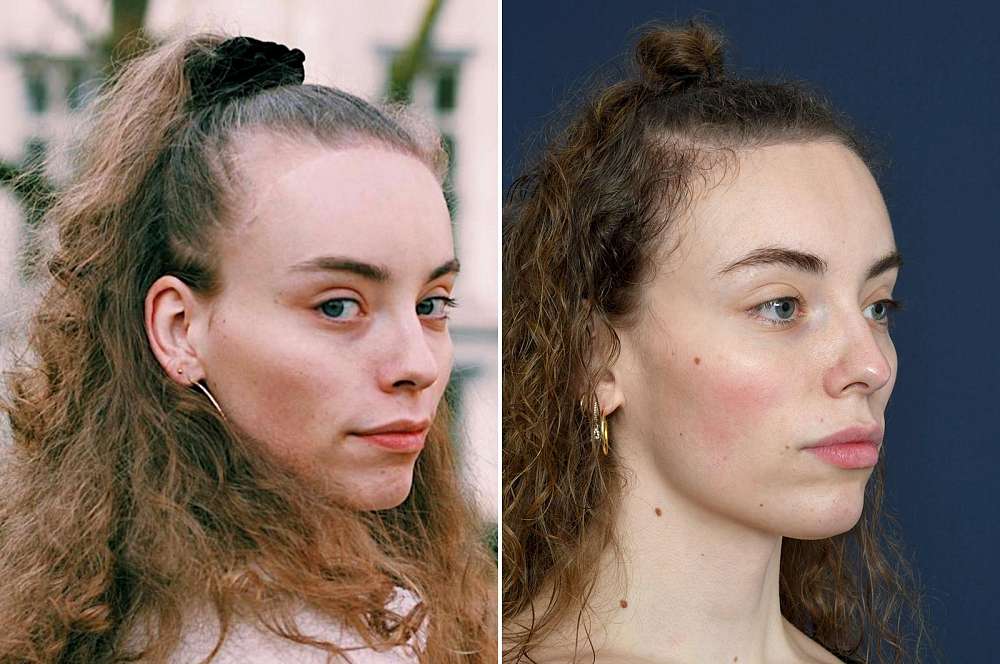Diese Seite wird in Kürze auf Deutsch verfügbar sein.
Hair transplant - FUE
Inhaltsverzeichnis:
What does FUE mean?
FUE is the abbreviation for Follicular Unit Extraction. In this procedure, the individual hair follicles are removed one by one from various locations on the scalp and transplanted to the problem areas. This video captures the entire process in a nutchell:
Usually it takes about 8 to 12 months to see the initial results of new hair growth:
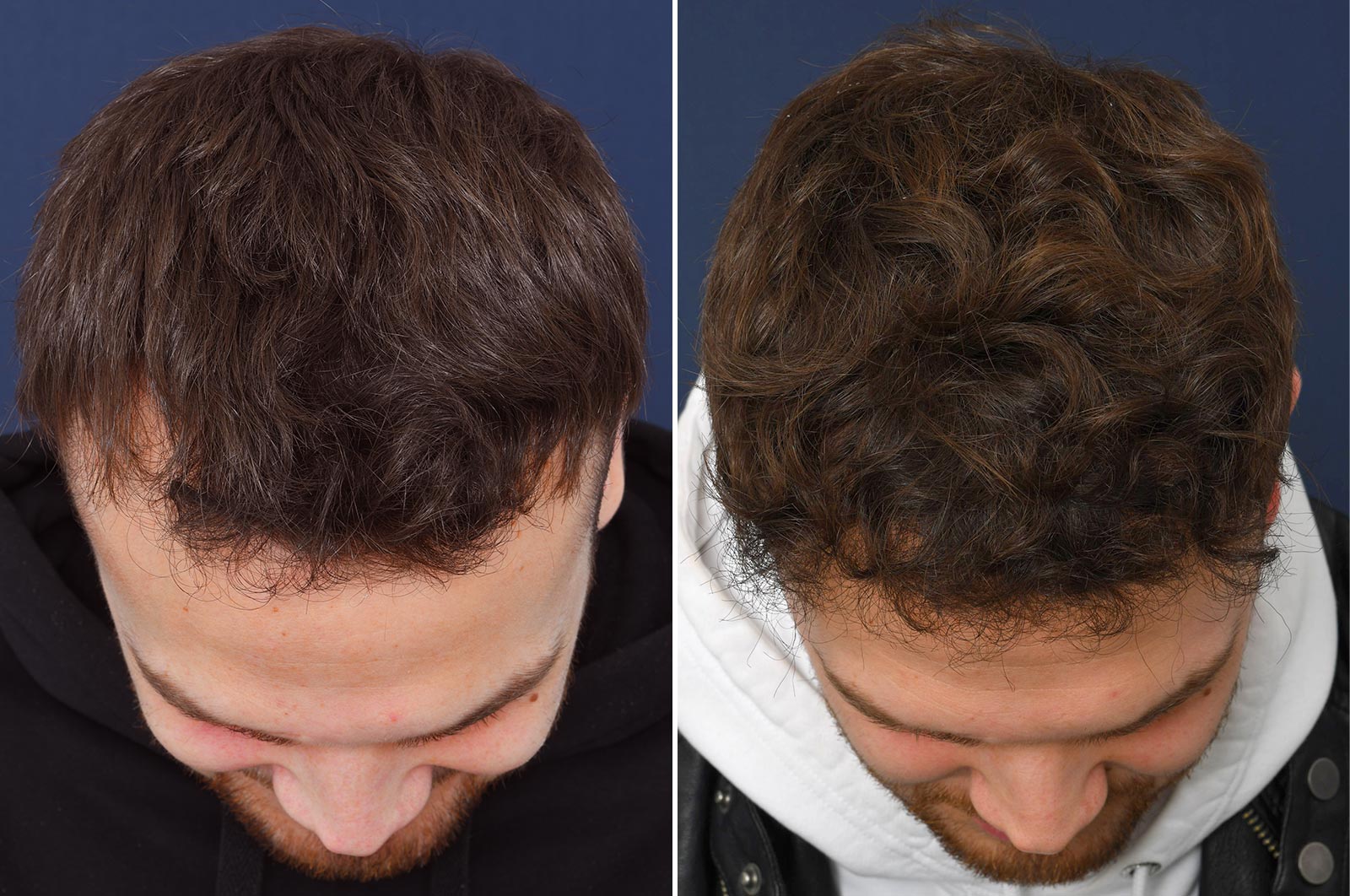 This is the result, 10 months after hair transplant surgery.
This is the result, 10 months after hair transplant surgery.
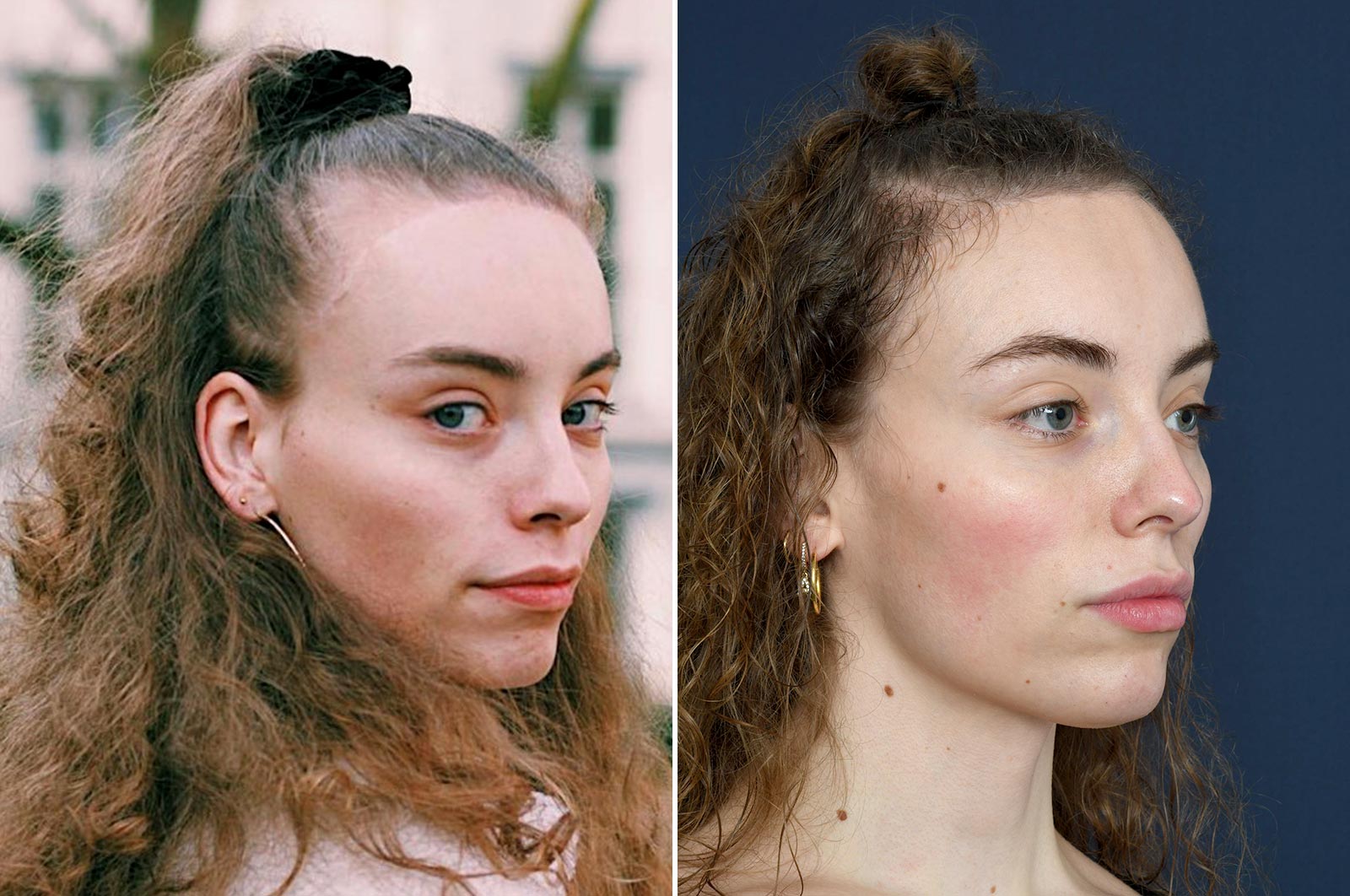 This is the result, 11 months after hair transplant surgery.
This is the result, 11 months after hair transplant surgery.
Using this method, the donor area is shaved, allowing the grafts to be harvested more quickly and efficiently. Baby hairs will also be trimmed.
This FUE-method is usually used in the following cases:
- FUE (with shaving): especially for large zones (more than 1500 grafts)
- If you have slightly thinner hair.
- If you want a very natural-looking result.
- The FUT-technique (Follical Unit Transplantation) we no longer do, this is an outdated technique. This leaves a large scar.
 Possible treatments zones
Possible treatments zones
How does a hair transplant using the FUE method work?
Before your treatment starts, your back of your head will be prepped. Markings are applied, the back of the head is usually shaven down and later on anaesthetised.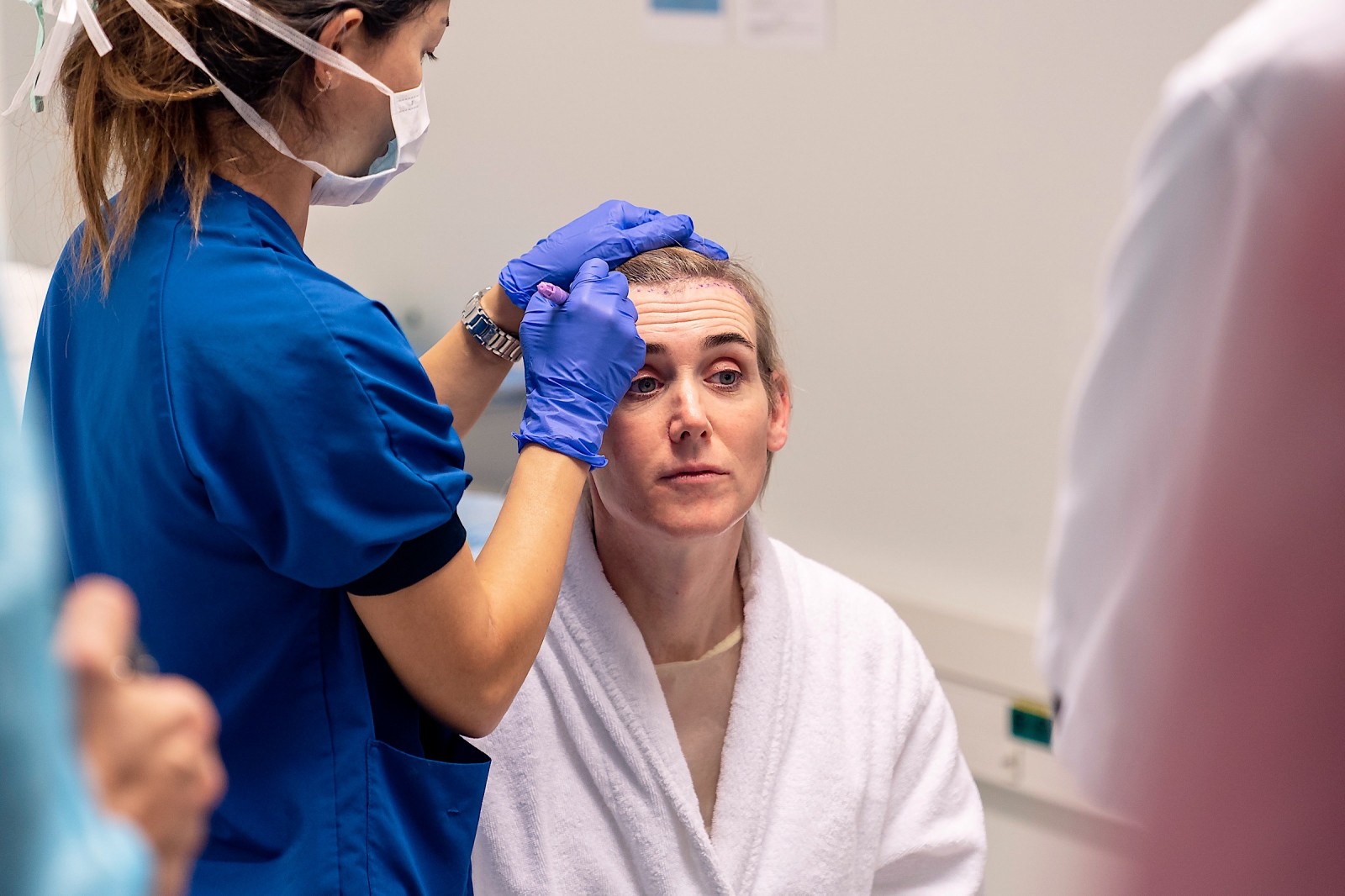 A hair technician marks the recipient area before the hair transplant.
A hair technician marks the recipient area before the hair transplant.
Step 1: Defining the hairline and outlining the treatment areas
Based on your feedback, the hair technician will make the necessary outlines on your scalp using a marker.
Step 2: Removal of the grafts
After prepping and locally anaesthetising the donor area, the "harvesting" of the grafts begin. During this phase, you will lie on your frontside and the techincians will use a micro-drill of 0.3 mm, harvesting the grafts one by one. This takes about two hours, depending on how many grafts can or need to be harvested. The removed grafts are checked and prepared for implantation.
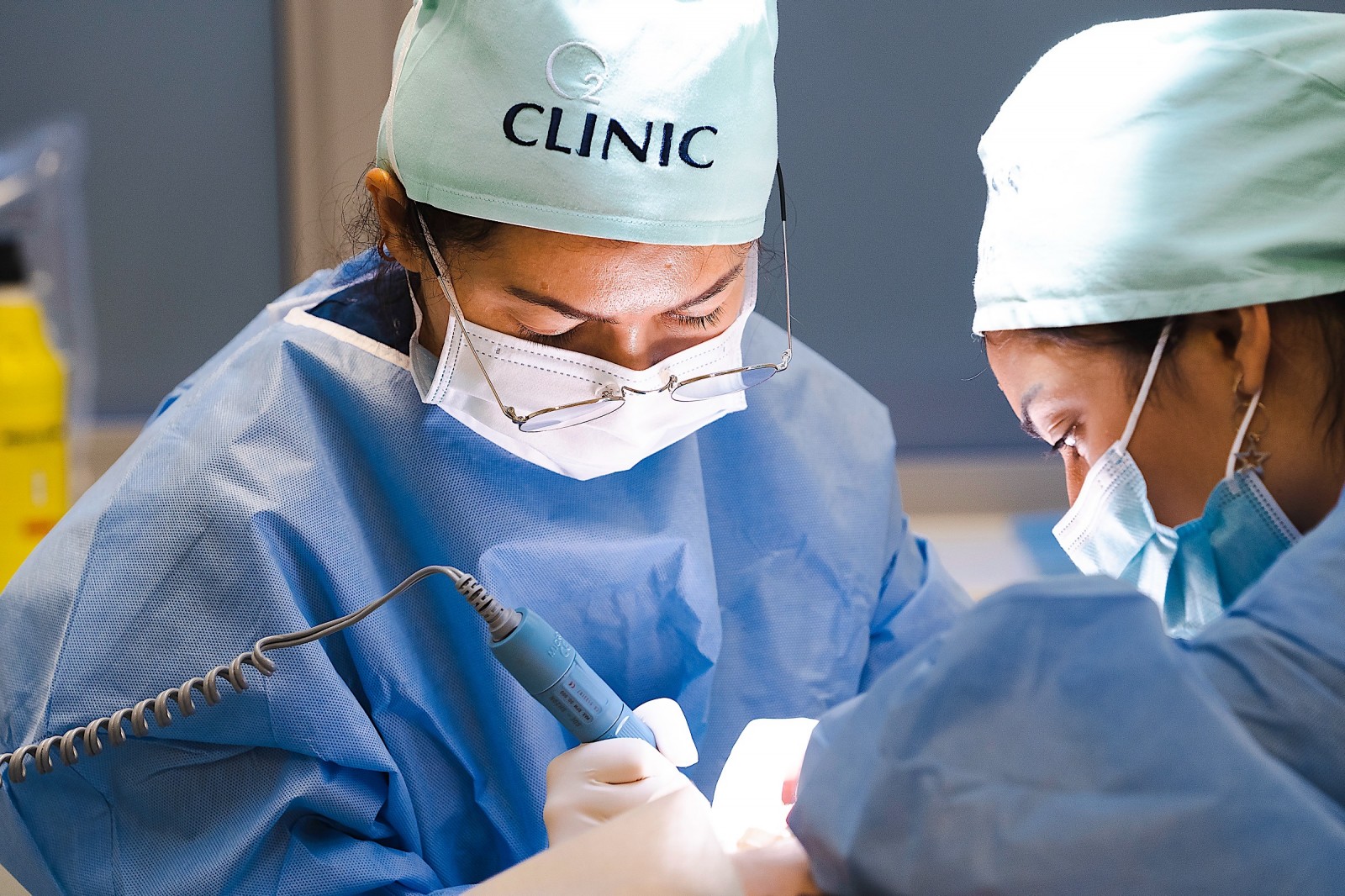 Hair technicians at work, removing grafts at the back of the head using a micro drill and tweezers.
Hair technicians at work, removing grafts at the back of the head using a micro drill and tweezers.
Step 3: Opening the incision channels
During this phase, you will lie on your back. This time, the recipient area is locally anaesthetised. In this area, we make incisions in the direction of hair growth.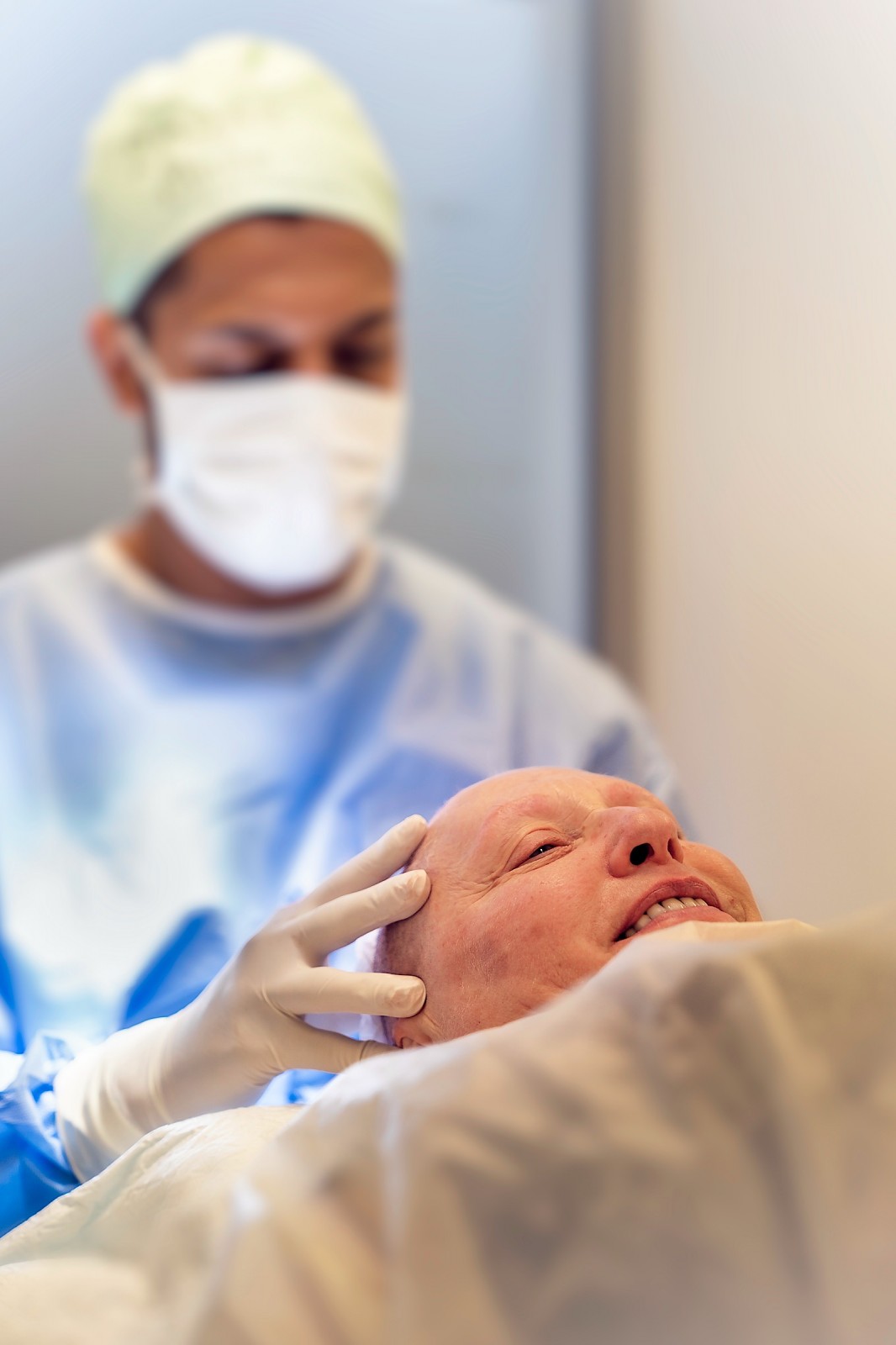 A hair technician opening up the channels around the hairline in the recipient area.
A hair technician opening up the channels around the hairline in the recipient area.
Step 4: Implanting the grafts
The grafts are implanted back into the incisions one by one.
 Grafts being implanted into the incisions one by one.
Grafts being implanted into the incisions one by one.
Step 5: Aftercare
After the hair transplant, your scalp will be treated and bandaged. In addition you will receive useful instructions from our hair technicians on how to take care of your scalp. After a couple of days, you can gently wash your hair.
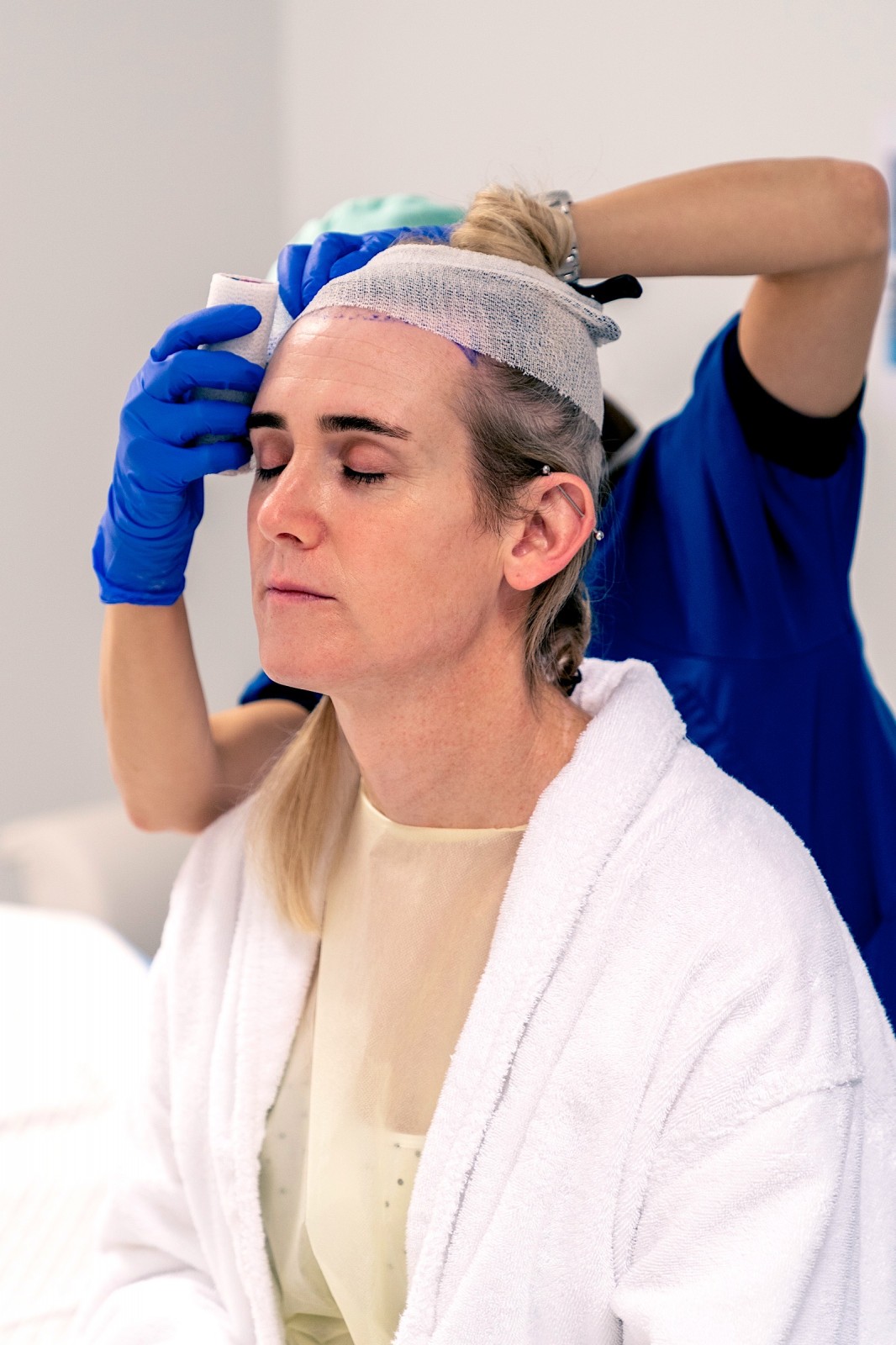 That's a wrap! A bandage is applied to protect your scalp during the following days.
That's a wrap! A bandage is applied to protect your scalp during the following days.
Advantages of the FUE method
- This method is faster than DHI.
- This method is slightly cheaper than DHI due to lower material costs.
- Lasting results.
- Hardly any visible scars.
- The donor area remains unchanged if you choose the no shave method.
- Very natural result.
- Minimum sensitivity during and after the procedure.
- The maximum number of grafts can be removed.
- No stitches needed.
- Ideal for treating small areas, areas with low hair density or scars.
Possible side effects and disadvantages
- Your head may feel sensitive and be slightly swollen after the treatment.
- In very rare cases, infection may occur. Therefore, as a precautionary measure, we give antibiotics before and after the treatment.
- In rare cases, shock loss may occur, resulting in temporary hair loss. This is because the scalp has been under stress during the treatment.
- For large areas, it is a lengthy process.
- More bleeding is possible as incisions have to be made in the recipient area.
- Slightly more scarring possible compared to the DHI method.
- The quality of the grafts may decrease due to the use of the micro-drill and because it takes longer for them to be implanted again.
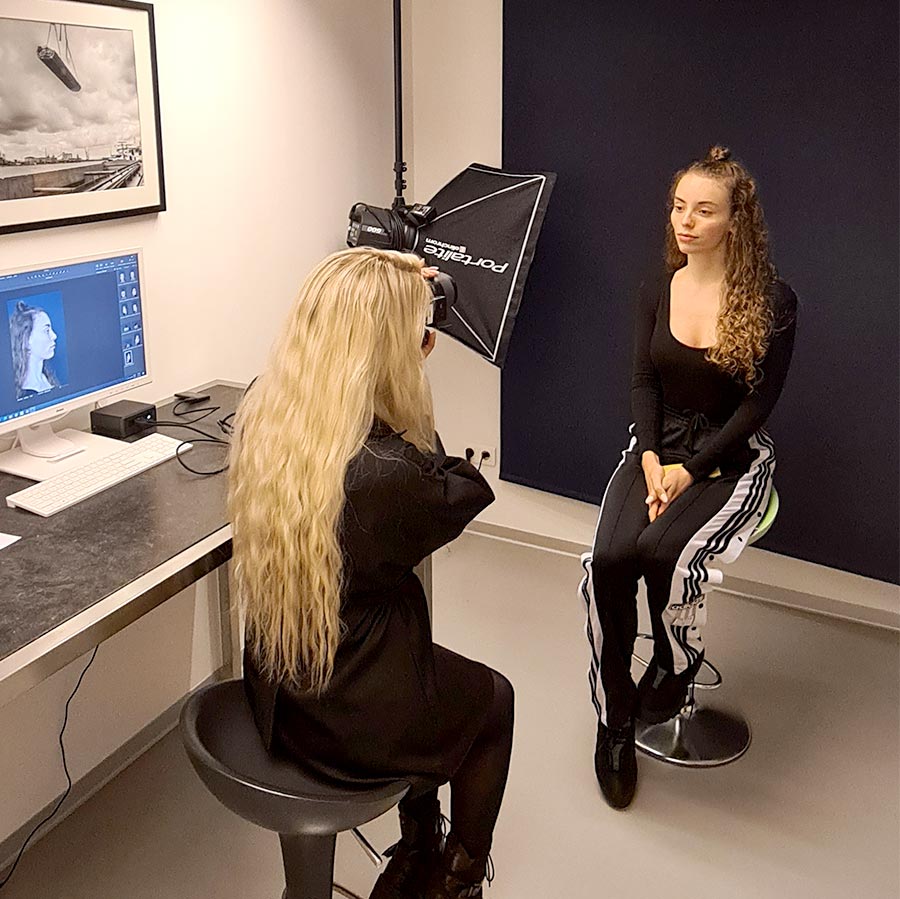 Before and after the treatment, pictures are taken to document the progress and results.
Before and after the treatment, pictures are taken to document the progress and results.
Who is not a suitable candidate for a hair transplant with the FUE method?
The FUE method is less suitable for people with very curly, thin or frizzy hair. These fragile hairs are easily damaged in the process.
Those who suffer from the following conditions:
- Low blood pressure
- Cardiac arrhythmia
- Blood thinnersFF
- Diabetes
Wir tun unser Bestes, um diese Informationen auf dem neuesten Stand zu halten. Wenn Sie etwas sehen, das nicht mehr korrekt erscheint, oder wenn Sie eine Frage haben, füllen Sie bitte das untenstehende Formular aus!

